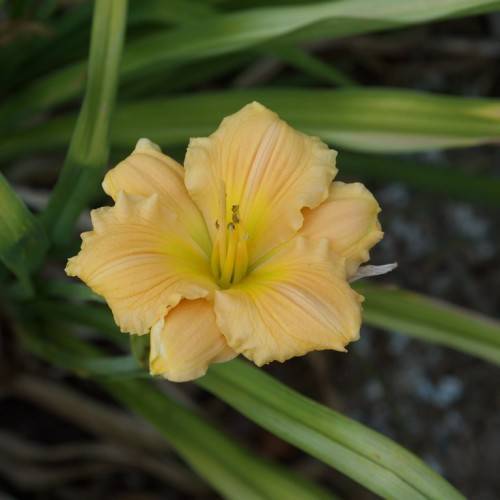
daylily
Hemerocallis 'Apricot'
Cycle:
Herbaceous Perennial
Watering:
Average
Hardiness Zone:
3 - 9
Flowers:
Flowers
Sun:
Full sun,part shade
Leaf:
Yes
Growth Rate:
Low
Maintenance:
Low
Drought Tolerant:
Yes
watering
Daylily (Hemerocallis 'Apricot') should be watered on a regular basis, approximately once or twice a week, depending on the temperature and soil conditions. For instance, in warm climates, the soil may dry out more quickly and thus require more frequent watering. When watering, moisten the soil around the daylily to a depth of 6 inches. Avoid over-watering, which can cause plants to become diseased and die. Adding 2 to 3 inches of mulch around the daylily can help the soil to retain moisture and reduce the need for frequent watering.
sunlight
Daylilies (Hemerocallis 'Apricot') prefer full sun, which is approximately 8 hours of direct sunlight per day. For best blooms, daylilies should receive at least 6 hours of direct sunlight each day from early morning to late afternoon. It is important to note, however, that during the hottest hours, such as the middle of the day, some protection from direct sun should be provided. This can be done by planting daylilies under trees that provide partial shade, as well as using trellises, awnings, and other structures to protect them. Alternatively, daylilies can also be planted in containers or hanging baskets that can be moved around to find the optimal spot for their needs.
pruning
Daylilies (Hemerocallis 'Apricot') should be pruned in early spring. Cut any brown, dead foliage off the stems close to the base of the bulb. This will help to promote better air circulation and prevent issues like leaves from maturing too early in the season. Deadheading spent flowers will also help to encourage re-blooming. Deadheading means removing the dead flower heads from the stems when they begin to dry up and die, which will help to prevent the plant from seeding and consuming the plant’s energy for flowering. If needed, trim back the foliage after flowering as it begins to die back. Removing the spent foliage will help encourage new, fresh foliage in the spring.
